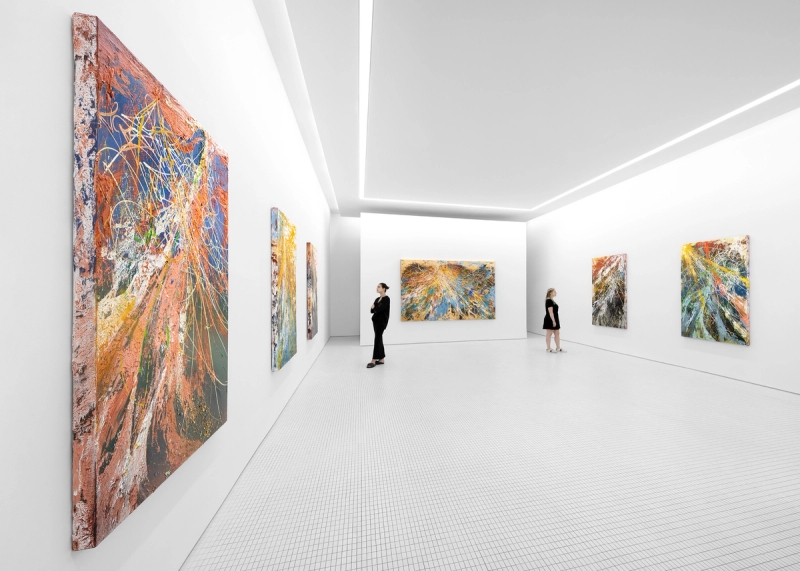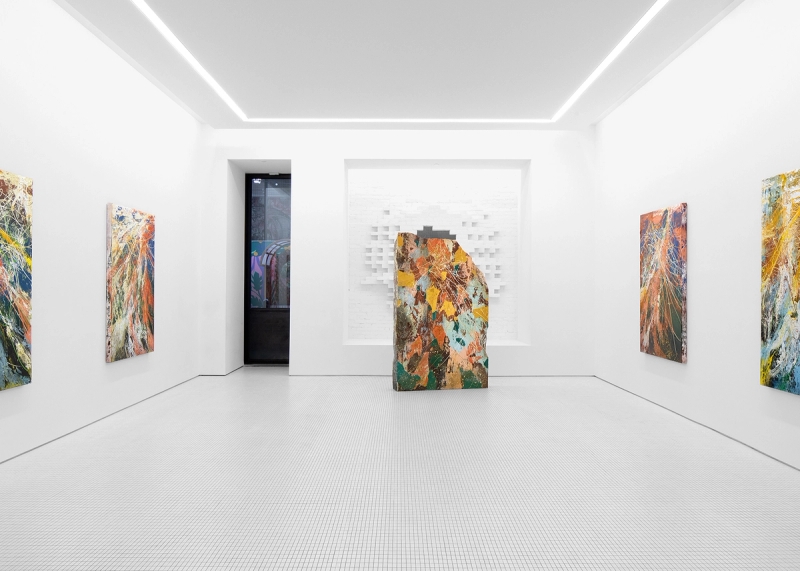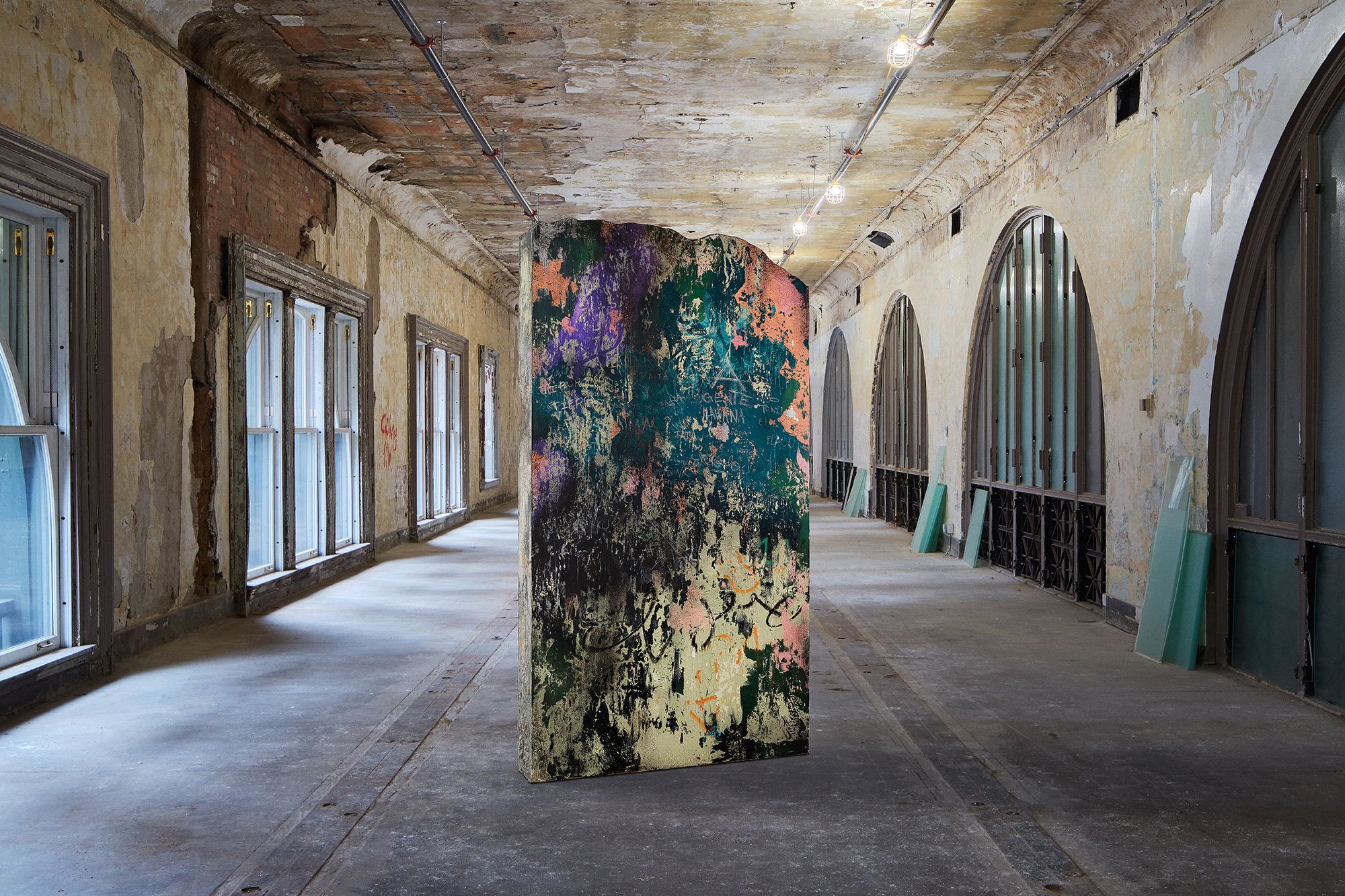
Press Release

José Parlá
Position, 2022
Acrylic and oil paint on canvas
48 x 72 inches
Library Street Collective is thrilled to present Polarities, an exhibition of new works in painting and sculpture by critically acclaimed multimedia artist José Parlá, opening Saturday, July 9th, 2022. Parlá is known for his skillful engagement with the rich history of painting while infusing ephemeral elements and the life cycles of cities. Built with countless layers of texture, script, acrylic, plaster, and paper collage, his works communicate the passage of time within city neighborhoods where advertisements, writing, construction, and demolition leave their impressions steadily over time. In describing his work, Parlá makes connections between environment, history, and perception: "It is psychological. To read it is not to look at what is written simply; it is about deciphering the feeling. I call it reading through feeling, those textures and marks symbolizing the psycho-geographical traces of memory."
Polarities materialized in the wake of the pandemic when the artist felt its impacts acutely; after months spent in a hospital with COVID19, Parlá's doctors weren't sure if he'd ever paint again. But, an artist to his core, he proved them wrong, and the works that came about carry a heightened sense of spirituality and empathy. More than ever, Parlá sees within his practice the threads that unite us and how our actions (and passivity) become our legacy. A prominent characteristic of his work, the paintings in Polarities share a strong sense of centrum: a heart or prime mover from which bold brushstrokes and elegant lines of script emanate. These marks indicate the beginning of time, the moment from which every passing day and its events have radiated, crashed, and splintered. They are maps and topographies, micro and macro ecosystems.
There will be a unique understanding of the works on display for those from Detroit. While at the heart of any city is its residents, the artist understands that the physicality of traces left by its people reveals its past. One need only take a drive around Detroit to absorb the ebb and flow of a history that began with indigenous settlement (the precolonial earthwork burial mounds that became a Pottawatomi village and later Fort Wayne); flourished as the Industrial center of the US in the early 1900s, and was one of the centers of racial segregation and explosive Civil Rights movements in the 1960s. In addition, Detroit was the site of the first urban highway system that decimated neighborhoods, sending white populations to the suburbs; the home of Motown in the 1960s, and the heart of American electronic music in the 1980s and 90s. Like so many urban centers across the globe, these structures, cultures, and systems still stand; however, the sheer size of Detroit and its plummet in population at midcentury—which stagnates to this day—has left the city in a unique position in the US where so much of its history remains standing, however derelict it may be. The marks are everywhere you look.
In its tightened connection between Detroit and Havana, Polarities contrasts the political systems that structure the boundaries of our freedom to leave such historical imprints on our cities. Laura Mott, Chief Curator at Cranbrook Art Museum, has written a powerful essay for the Polarities exhibition catalog, saying:
Between the two cities, there is a similar entropy on the surfaces of their architecture, which Parlá sees as evident in his own painting aesthetic… On the greater world stage, the cities encapsulate the communist vs capitalist dilemma: Havana, as the home of Cuba’s authoritarian government; Detroit, as the often-used example of the perils of capitalism. Both systems blame each other for the state of the world, polar ideologies that have led to war and millions of deaths.
The artist's extensive travels across the globe have only enforced what he learned growing up as the son of Cuban immigrants in Puerto Rico and Miami: that the impressions and scars of communist and capitalist regimes are not that different. In moving from Cuba to the United States, Parla’s parents pursued freedom and upward mobility, and even as a 10-year-old, he realized that the United States of America wasn't what he expected. In Miami and later in New York, he gravitated towards a community of artists that used paint, film, and dance to protest racism, gentrification, and economic inequality; that clashed with apathy and the police. In later developing a conceptually and aesthetically rigorous studio practice, the sentience of injustice, endurance, and the marks of their ghosts have stayed with him.
In this way, the work of José Parlá is about Detroit. It’s about Havana, Miami, Berlin, and New York; about the history of these cities and the people who leave traces: Indigenous peoples, colonizers, industrialists, architects, activists, people of color, developers, gentrifiers, the middle class, the wealthy and the homeless. It's about how we build one another up and tear each other down. Where figurative painting holds power in telling a more specific story of time and place, Parlá's abstractions—with their countless layers that are applied, subtracted, scratched out, and painted over—tell it all at once. They are multi-polarized with stress, chaos, resilience, and beauty.
Polarities will be on display at Library Street Collective from July 9 through August 24, 2022.
Install Images



Artwork Images

José Parlá
Polarity, 2022
Acrylic and oil paint on canvas
108 x 72 inches
Explore More
